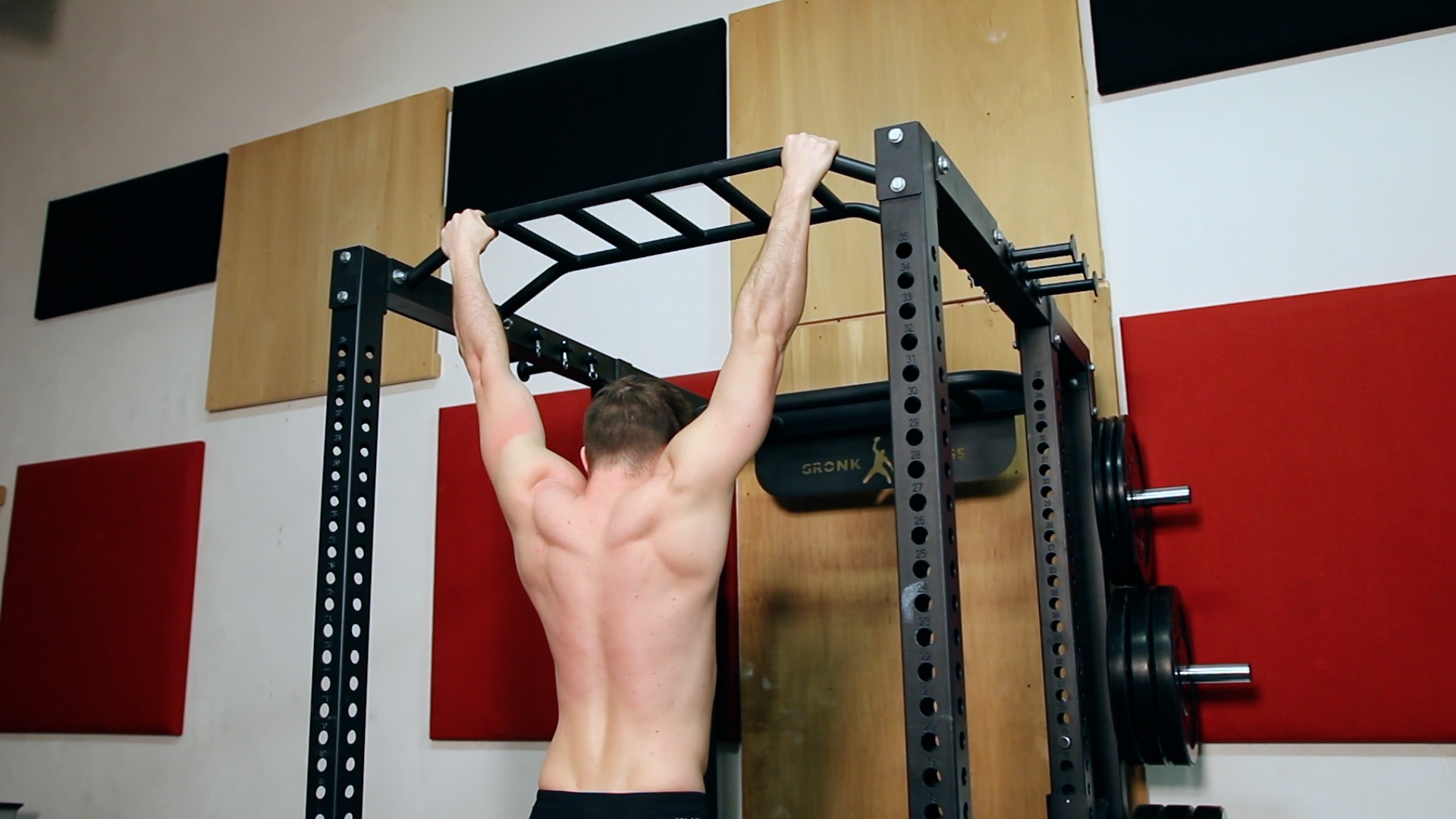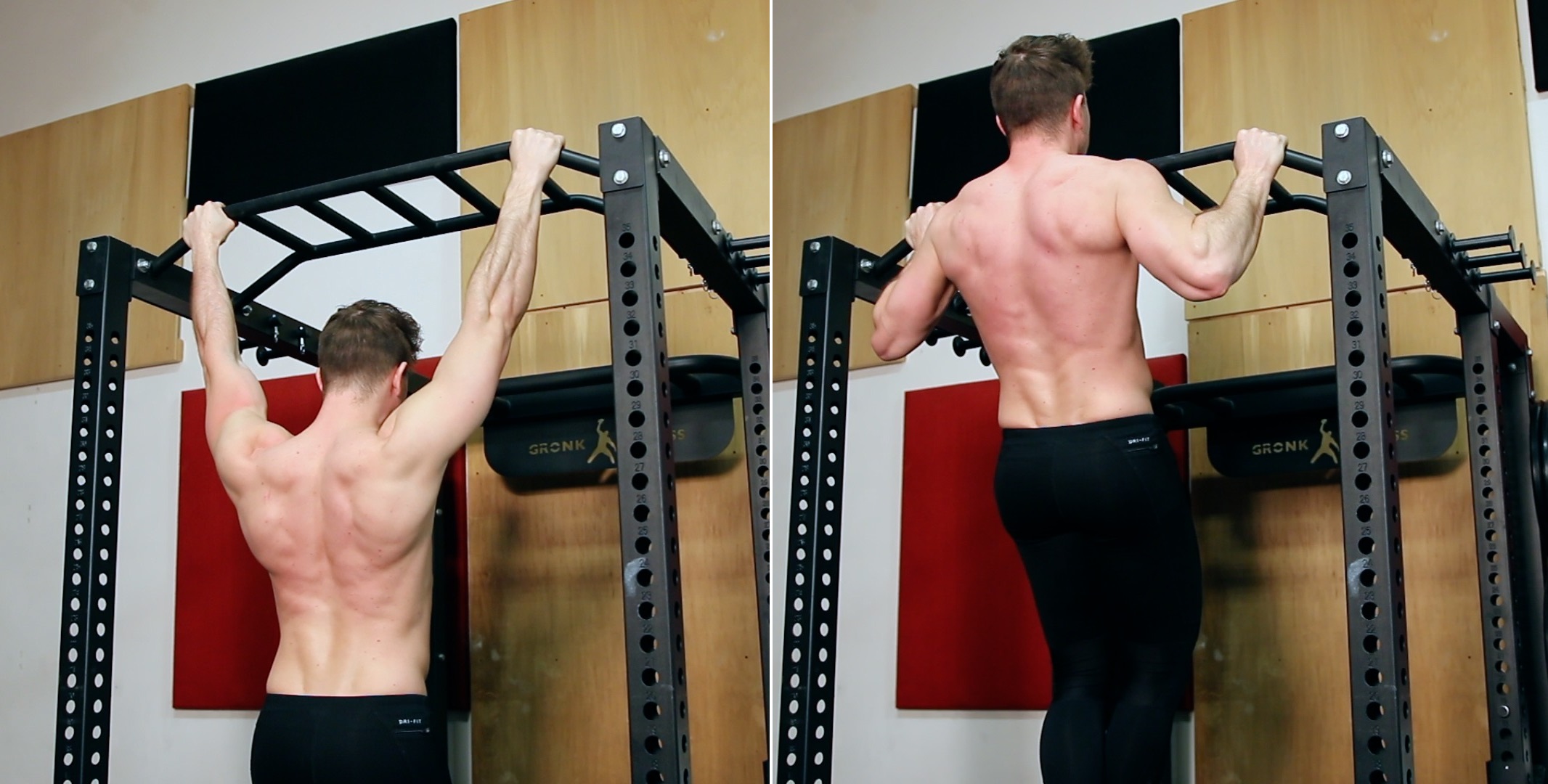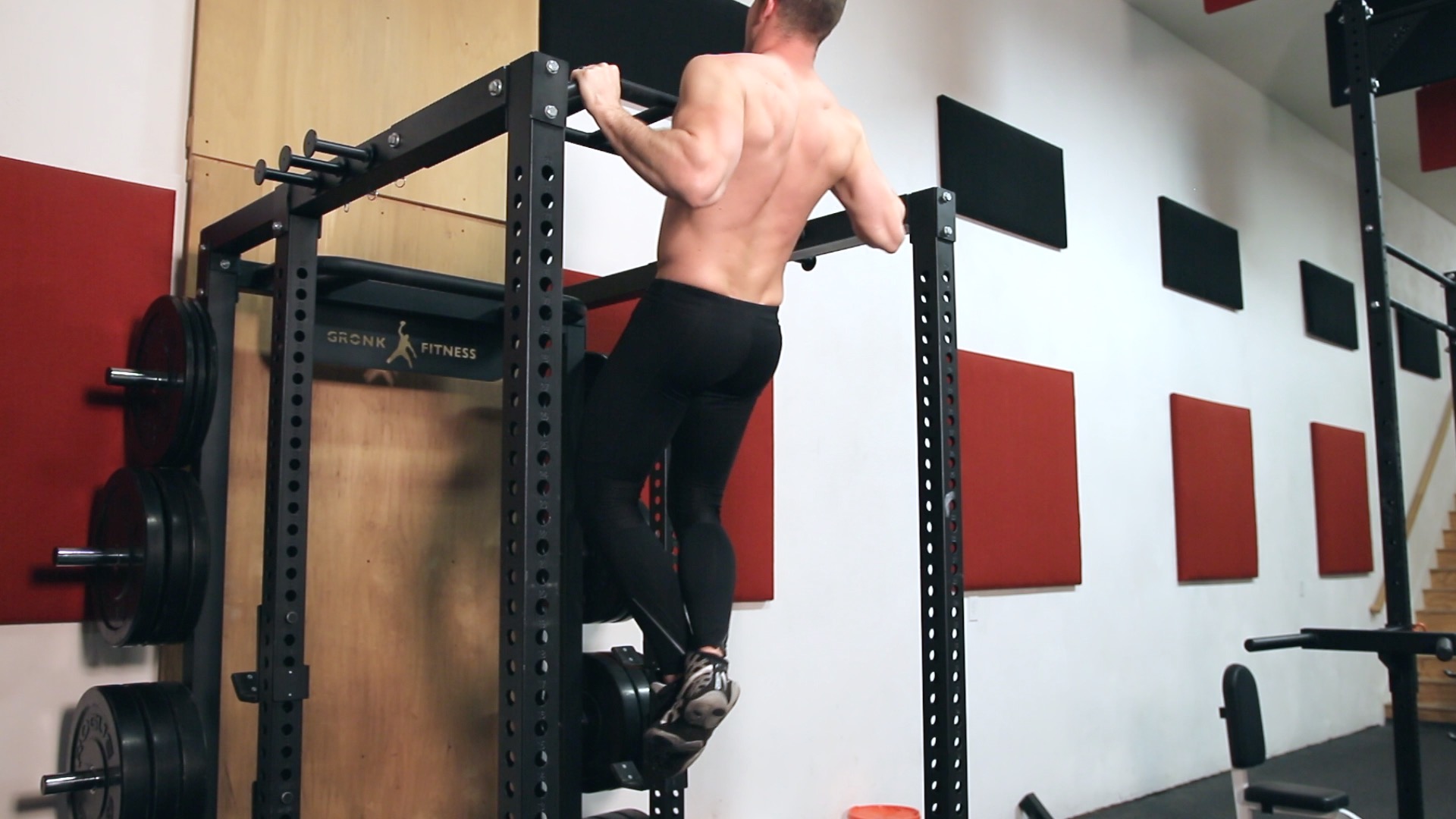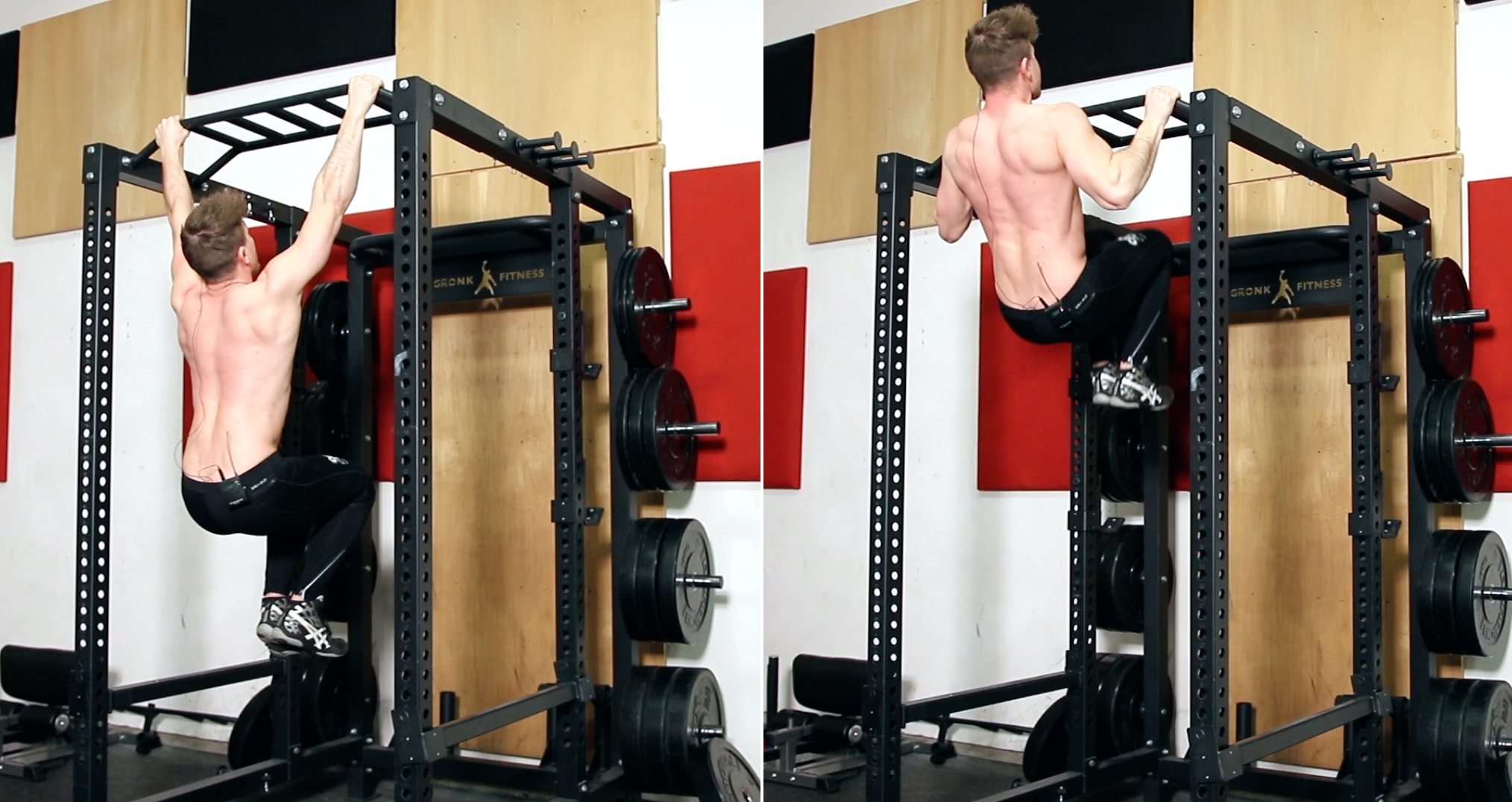How To: Pull-Up
3 Golden Rules
Today I’m going to go over the three golden rules when performing a pull-up. Just like every other article in the golden rules series, the goal here is to show you proper form, and then show you how to take the exercise to the next level.
Pull-Up – Proper Form
When performing a pull-up, what you want to do is grab the bar a little outside of shoulder width. Once you’re in position, you’re going to keep your body nice and tight, and you’re going to pull yourself up, bringing your chest as high as you possibly can. Now you may not be able to bring your chest all the way up to the bar, but you want to get it as close as you can before controlling the movement and letting yourself go to a dead hang at the bottom. You then repeat this movement for repetitions. At its BASE FORM, that is what proper form of a pull-up looks like.

Golden Rule #1: Always Train In Full Range Of Motion
I know I just covered full range of motion (ROM) when going over proper form, but it’s what is happening inside your body, and that mind-muscle connection, that’s going to determine whether or not those reps are beneficial, or if you’re wasting your time. As I already said, I’m not so worried about you getting to the top of the movement, and having your chest touch the bar. Not everyone has the flexibility to do that, so every single time you pull to the top, just make sure you go as high as you possibly can.
When you go back down, however, there are a few things that need to happen in order to maximize the efficiency of the movement. The first is that full ROM requires a dead hang. A dead hang is where you fully disengage from the exercise. When you fully disengage from the exercise, you will notice a change in your back, and you will notice a lot more stretch in your lats. If you get to the bottom of the movement, and can still feel your lats are engaged, that’s not actually the bottom of the movement. You want to feel that nice, deep stretch in your back and lats.


When you can feel that nice deep stretch, it’s going to help you mentally turn off your biceps so that as you pull yourself up, you’re getting a lot more back engagement, and less bicep engagement. Obviously your biceps are a secondary mover when doing a pull-up, but what holds a lot of people back from fully maximizing the efficiency of a pull-up to build a wide back is that the biceps are doing the majority of the work. So get to the bottom, get to a dead hang, feel those lats stretch, and then pull yourself back to the top.
Golden Rule #2: Avoid “Power Leaks By Flexing Core / Lower Body
If you have a hard time with pull-ups, if you’re trying to get as many reps as possible with proper form, and you’re having to fight your body swinging side-to-side or forward and back, you’re losing power. To try to keep as much power as possible, and to be able to perform as many repetitions as you can, what you’re going to do is cross your legs, flex your glutes, flex your legs (squeezing your toes together will help), flex your core, and then you’re going to pull up before coming back down. You’ll quickly notice that you’re able to stay pretty much in a perfectly straight line when you do that.

If you want to take your pull-ups to the next level, you can actually do something very simple, which is lift your knees in the air. Part of your lats originate in your lower back. This means if you lift your knees in the air, you’re going to create spinal flexion, which is actually going to cause a pre-flex on the lats before you even start doing your pull-ups. So while hanging like you were before, you’ll still keep your core tight, but now you’re going to lift your knees in the air to create spinal flexion, and then perform your repetitions like that. As you’ll quickly find out, it’s much harder to do it that way.

Golden Rule #3: Always Progress With The Movement!
Obviously the main progression here is going to be adding more and more weight every time you do pull-ups. But let’s say you can’t do bodyweight pull-ups yet, so you start with a band to help you do your pull-ups. Then you do bodyweight pull-ups, and then move onto weighted pull-ups. Once you get those nailed down, try changing up your grip position – do a super wide grip, do a super close grip, do a neutral grip, or even try doing chin-ups. Even after you’ve built all this strength, and you can even do pull-ups with 25lbs or 45lbs strapped to your waist, try going back to bodyweight pull-ups and go for high volume. Try doing 20, 25 or 30 pull-ups in a row. Always be progressing with the movement, don’t let your body get used to it.
Conclusion
If you apply these tips, the pull-up can remain a staple exercise in your routine to help you see continued back growth, basically forever!








